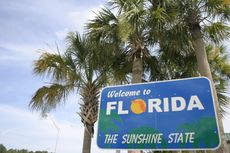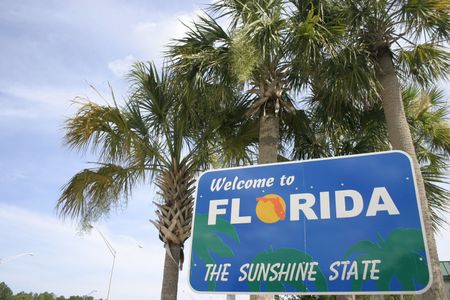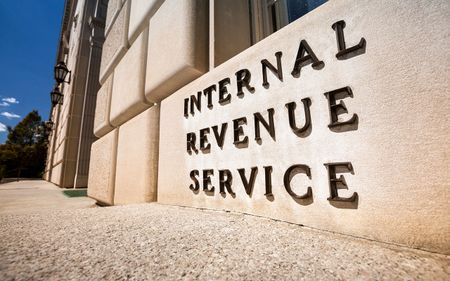The Employee Retention Tax Credit Helps Keep Workers Working
The credit is worth up to $5,000 per paid employee for businesses financially harmed by the coronavirus pandemic that continue to keep employees on the payroll.


Congress is relying in part on tax relief to help boost the U.S. economy dragged down by the coronavirus pandemic. Take, for example, the employee retention tax credit (ERTC), a federal payroll tax break available to businesses economically hurt by the coronavirus crisis but continue to keep employees on the payroll. It was enacted as part of the Coronavirus Aid, Relief, and Economic Security (CARES) Act.
Eligible employers
The credit of up to $5,000 per paid employee offsets the employer's 6.2% share of Social Security taxes, with the excess refundable. Eligible employers are those who have had to shut down or reduce hours because of a government order, or whose gross receipts in a quarter have declined by over 50%, compared with the same quarter in 2019.
Charities and other tax-exempt organizations qualify for the credit. State and local governments, as well as the federal government, do not qualify. Employers that received a loan under the Small Business Administration's Paycheck Protection Program are currently not eligible for the ERTC.

Sign up for Kiplinger’s Free E-Newsletters
Profit and prosper with the best of expert advice on investing, taxes, retirement, personal finance and more - straight to your e-mail.
Profit and prosper with the best of expert advice - straight to your e-mail.
Amount of the credit
The credit is 50% of up to $10,000 in qualified wages per employee. "Qualified wages" are wages paid from March 13 through Dec. 31, 2020, and depend on the number of employees the business had in 2019.
For firms averaging more than 100 employees in 2019, qualified wages are wages paid to employees only for the time they did not work. For smaller firms, all wages paid to employees are qualified wages, regardless of whether the employees worked or not.
Qualified wages also consist of employer-provided health care, including the employer's cost of health coverage for unpaid, furloughed workers.
(Note the IRS initially said the cost of employer health insurance for unpaid, furloughed workers isn't included in qualified wages, but changed that view after getting pressure from congressional taxwriters).
Qualified wages don't include wages computed in figuring the payroll tax credit for small employers that provide mandated paid sick or family leave to workers affected by the COVID-19 virus.
Claiming the credit
As mentioned above, the ERTC offsets the employer's 6.2% share of Social Security taxes, with the excess refundable. Employers claim the credit on their quarterly Form 941, and they have two ways of quickly taking advantage of the break before they even file the 941.
First, they can reduce employment tax deposits otherwise owed to the IRS by the amount of the ERTC the business qualifies for. Employment taxes that can be reduced include (1) withheld federal income tax from employee wages, and (2) the employees' and employer's shares of Social Security and Medicare taxes.
Second, if the credit exceeds employment tax deposits, then employers can seek advance payments for the excess by filing new IRS Form 7200. Employers can fax the form to the IRS at 855-248-0552. When employers file their quarterly Form 941, they will need to reconcile the ERTC with any reduced deposits and/or advance payments they received.
There are lots of rules and complexities involved with the ERTC. The IRS has provided online guidance on this credit in a set of FAQs covering various topics.
Get Kiplinger Today newsletter — free
Profit and prosper with the best of Kiplinger's advice on investing, taxes, retirement, personal finance and much more. Delivered daily. Enter your email in the box and click Sign Me Up.

Joy is an experienced CPA and tax attorney with an L.L.M. in Taxation from New York University School of Law. After many years working for big law and accounting firms, Joy saw the light and now puts her education, legal experience and in-depth knowledge of federal tax law to use writing for Kiplinger. She writes and edits The Kiplinger Tax Letter and contributes federal tax and retirement stories to kiplinger.com and Kiplinger’s Retirement Report. Her articles have been picked up by the Washington Post and other media outlets. Joy has also appeared as a tax expert in newspapers, on television and on radio discussing federal tax developments.
-
 Stock Market Today: Dow Dives 1,679 Points on Trump Tariff Shock
Stock Market Today: Dow Dives 1,679 Points on Trump Tariff ShockU.S. stocks lost roughly $3.1 trillion in market cap on Thursday – the biggest one-day decline since the start of the COVID-19 pandemic in March 2020.
By Karee Venema Published
-
 Did Florida’s Chance at $1,000 in Property Tax Rebates Vanish?
Did Florida’s Chance at $1,000 in Property Tax Rebates Vanish?State Taxes The Florida Legislature bypassed Gov. Ron DeSantis’ wish to cut property taxes and instead voted to lower the state’s sales tax.
By Gabriella Cruz-Martínez Published
-
 Did Florida’s Chance at $1,000 in Property Tax Rebates Vanish?
Did Florida’s Chance at $1,000 in Property Tax Rebates Vanish?State Taxes The Florida Legislature bypassed Gov. Ron DeSantis’ wish to cut property taxes and instead voted to lower the state’s sales tax.
By Gabriella Cruz-Martínez Published
-
 How Caregivers for Adults Can Save on Taxes in 2025
How Caregivers for Adults Can Save on Taxes in 2025Tax Breaks Caring for your parent or spouse can be stressful, but the IRS offers tax breaks for qualifying taxpayers. Here they are.
By Kate Schubel Published
-
 New South Carolina Income Tax Cut Might Eat Your Cash
New South Carolina Income Tax Cut Might Eat Your CashState Taxes South Carolina’s flat income tax bill could have the majority of residents paying higher income taxes. Find out how.
By Kate Schubel Published
-
 Taxpayer Revolt? Why More People Are Avoiding Filing Taxes This Year
Taxpayer Revolt? Why More People Are Avoiding Filing Taxes This YearTax Season It may be tempting to skip filing due to the overwhelmed IRS, but doing so could have financial and legal consequences.
By Kelley R. Taylor Last updated
-
 U.S. Treasury to Eliminate Paper Checks: What It Means for Tax Refunds, Social Security
U.S. Treasury to Eliminate Paper Checks: What It Means for Tax Refunds, Social SecurityTreasury President Trump signed an executive order forcing the federal government to phase out paper check disbursements by the fall.
By Gabriella Cruz-Martínez Published
-
 IRS Layoffs Spark Delays, Doubt This Tax Season
IRS Layoffs Spark Delays, Doubt This Tax SeasonTax Season Tax experts say Trump’s downsizing of the IRS is already causing problems.
By Gabriella Cruz-Martínez Last updated
-
 DOGE Gains More Grip on IRS Amid Leadership Reshuffle
DOGE Gains More Grip on IRS Amid Leadership ReshuffleIRS The IRS acting chief counsel was recently removed from his role, adding to the chaos at the federal tax agency. Here’s what it means for you.
By Gabriella Cruz-Martínez Published
-
 Trump’s Latest Pitch: No Taxes If You Earn Less Than $150K?
Trump’s Latest Pitch: No Taxes If You Earn Less Than $150K?Taxes The Trump administration reportedly wants to eliminate taxes for certain earners.
By Gabriella Cruz-Martínez Last updated